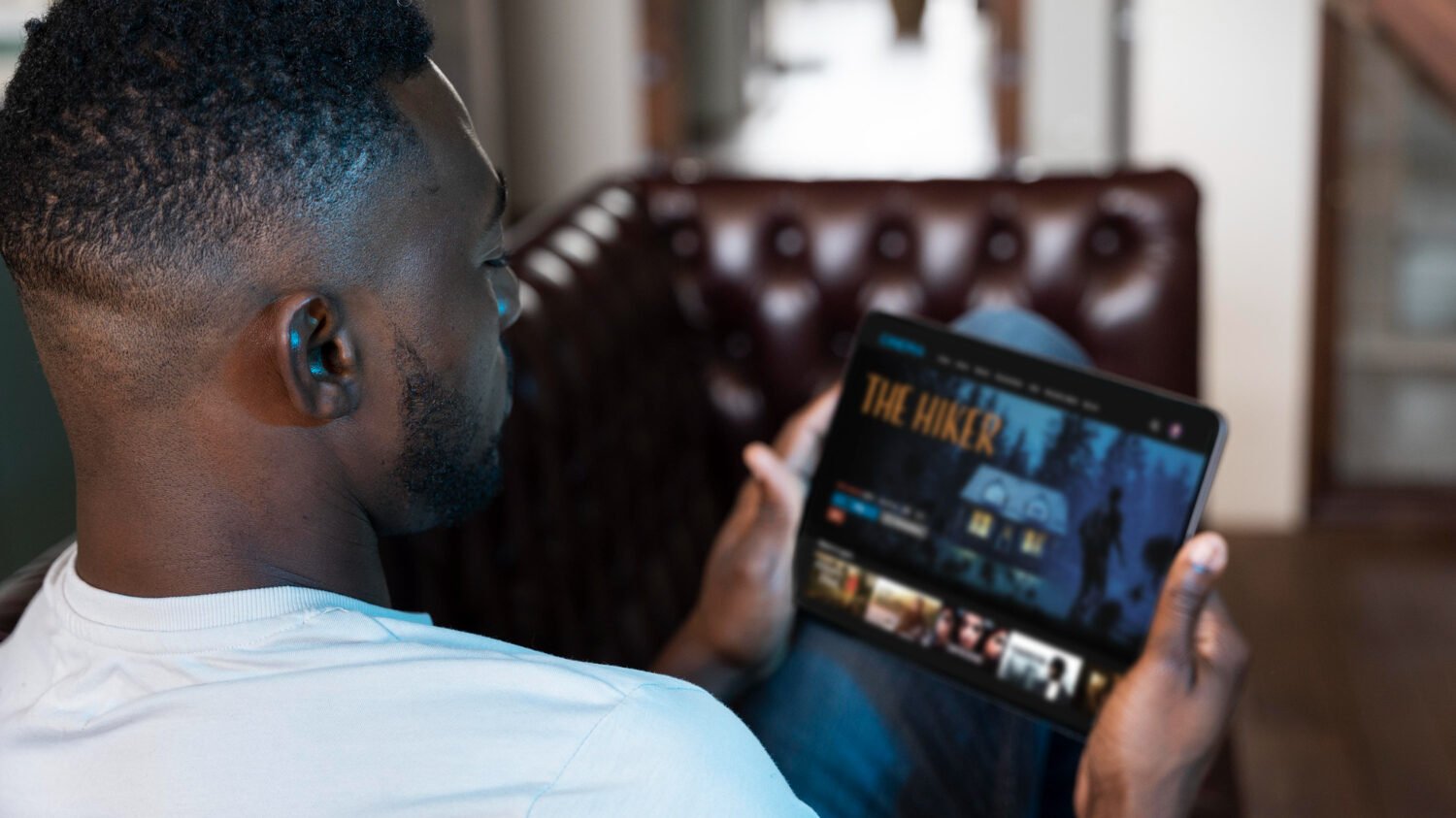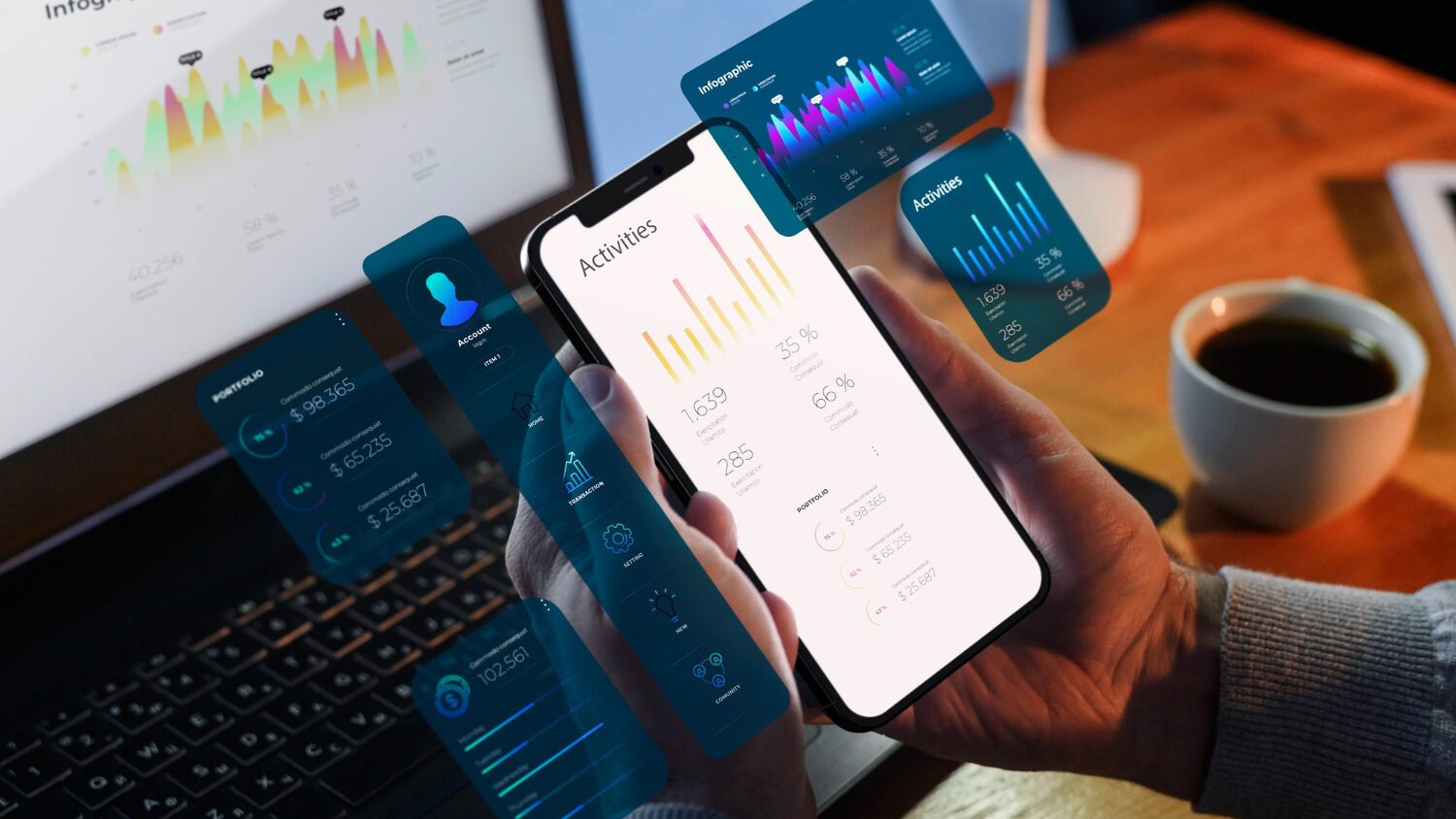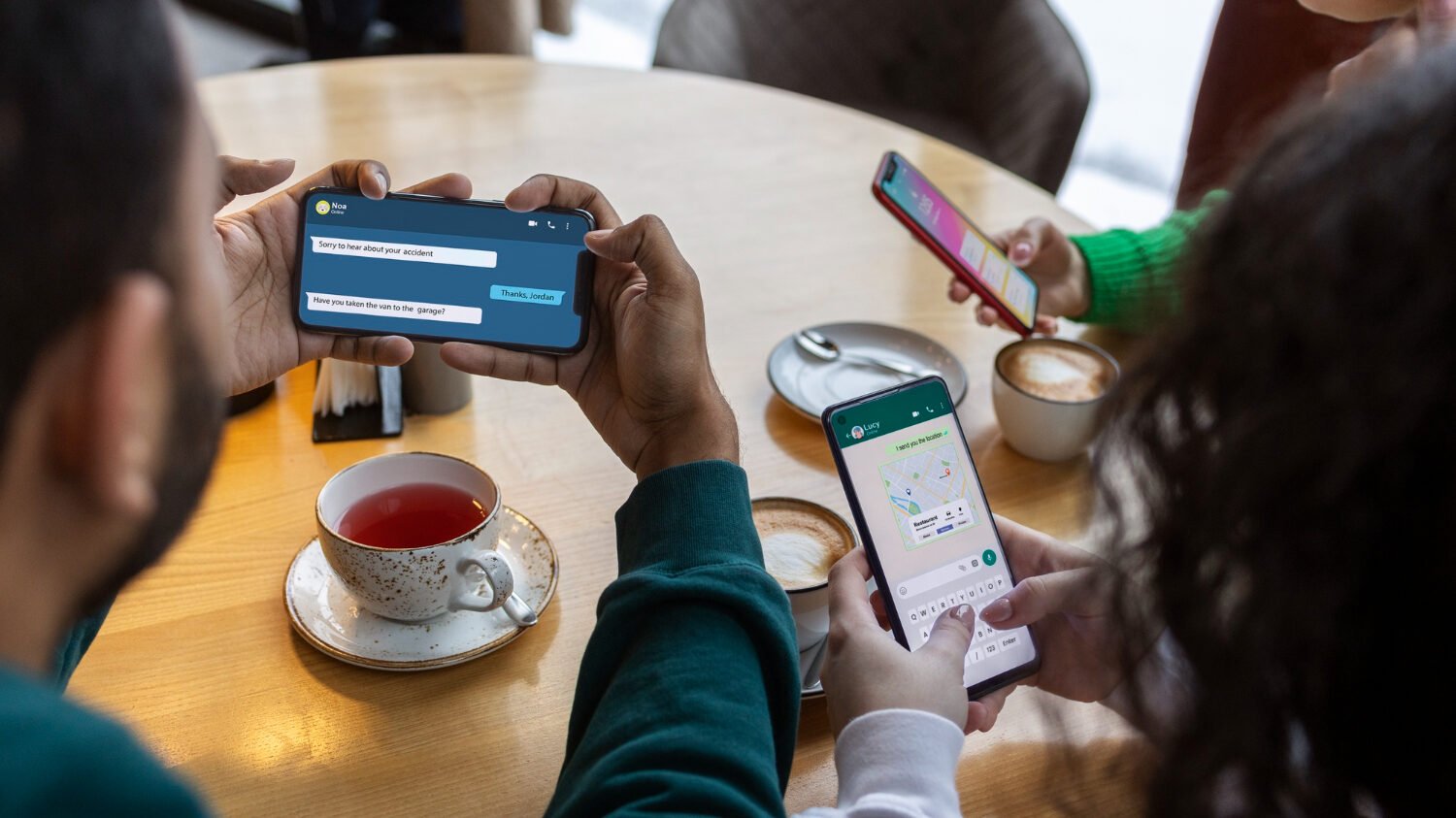Customer loyalty isn’t just about having a product that works – it’s about delivering real value, consistently. If users don’t feel understood or rewarded, they won’t stick around.
While 80% of companies believe they’re providing a great experience, only 8% of customers agree (Bain & Company). That gap is where loyalty is lost.
Every click, tap and swipe is part of a value exchange. Miss the mark and you risk churn, rising acquisition costs and a product that fades into the background.
True loyalty goes beyond habit. It’s emotional. It’s built when a product solves real problems, meets expectations, and feels worth coming back to again and again.
We help businesses build experiences that earn trust, create emotional connection and drive long-term retention. In this article, we explore the core drivers of digital loyalty—and how to turn new users into lifelong customers.
The Psychology and Science of Loyalty
Loyalty is more than repeat behaviour. It’s a combination of habit, emotion, and reward. From a behavioural science perspective, it’s rooted in habit formation and reward-based learning. When customers consistently receive value through speed, convenience, or delight, their brains link the brand with a positive outcome. Each satisfying experience triggers dopamine—a reward chemical—reinforcing the decision to return and forming a habit loop.
This ties into ‘operant conditioning’ which is behaviour shaped by positive consequences. Apps that deliver consistent value with minimal effort become associated with rewards, increasing the likelihood of future engagement.

But loyalty isn’t just behavioural—it’s emotional. Behavioural loyalty (habitual use) keeps users returning, but attitudinal loyalty (emotional commitment) turns them into advocates. Great apps blend both.
By delivering immediate value and making users feel recognised and connected, digital products move beyond transactions—they nurture sustainable, long-term relationships. And the payoff is measurable: emotionally connected users have significantly higher Customer Lifetime Value (CLTV), driving more repeat purchases, greater brand advocacy, and lower churn over time.
Going Beyond Transactions
Building trust with your user base and customers is critical. A transactional mindset leaves customers wanting more. It’s not just about what they buy but how they feel when they do it. Poor experiences can do lasting damage to trust.
Ask yourself: “If I were the customer, what would I expect?” The best customer-focused businesses ask this constantly.
Jeff Bezos famously leaves an empty chair in meetings to represent the customer—ensuring their voice is always in the room. That same mindset should apply to digital products. Without a user-centric lens during continuous improvement, the product quickly drifts off course and so do your customers. In fact, a PwC study found that 32% of customers would stop doing business with a brand they love after just one bad experience. Even a single overlooked pain point can erode trust and undo the loyalty you’ve worked hard to build.
Loyalty is Not a Scheme
We encounter countless loyalty schemes, but how often do we return because of them? Usually, it’s not the scheme that drives repeat engagement—it’s the value underneath.
A recent YouGov survey found that 77% of UK consumers are members of at least one loyalty programme, but only 33% feel those schemes offer real value. The implication? Most schemes fail to meet customer expectations because they focus on transactions, not meaningful experiences.
Providing value during unexpected moments or emotionally significant times can significantly influence purchasing behaviour. When your product or offer is timely, relevant, and aligns with the user’s context, it generates positive emotional associations. This could involve a seasonal reminder, a considerate nudge, or a well-timed incentive. The key is to engage users where they are. When done effectively, these emotionally resonant interactions build trust, strengthen connections, and convert one-time users into long-term customers.
The Role of Apps in Customer Loyalty
Loyalty programmes have evolved from physical punch cards to digital-first ecosystems driven by apps. Today, apps are the core of many loyalty strategies.
Why? Because apps offer more than convenience—they create frequent, personalised touchpoints with users. Studies show that users who download a brand’s app are 2.4x more likely to make repeat purchases and spend more per transaction.
Apps also build psychological commitment. Users who invest time in onboarding or setting preferences are less likely to churn. Apps feel more personal and permanent and that stickiness is loyalty gold.
Users who invest time in onboarding or setting preferences are less likely to churn. Apps feel more personal and permanent and that stickiness is loyalty gold.
Personalisation
Nothing elevates a customer experience faster than personalisation. Whether it’s an AI-powered recommendation or a simple “Welcome back, Sarah,” users feel more valued when the experience is tailored to them.
Take Very, the UK-based online retailer. By using machine learning to personalise its homepage and promotional offers based on browsing and purchasing behaviour, Very saw a 17% increase in click-through rates and a significant uplift in customer engagement. It shows how targeted experiences can drive real performance.
And it’s not just about showing the right product—it’s about showing it in the right way. Netflix, for example, doesn’t just recommend shows—it dynamically selects the thumbnail you’re most likely to click, based on your previous viewing patterns. It’s micro-personalisation in action, creating subtle but powerful behavioural nudges.

And the stakes are high. According to McKinsey, 76% of customers get frustrated when companies fail to deliver personalised interactions, and effective personalisation can reduce acquisition costs by up to 25%. That matters when 1 in 4 users abandon an app after just one use (TechCrunch).
It’s not just about reacting to past behaviour—it’s about predicting what users might want next. Anticipating needs builds trust, reduces friction, and creates a sense of connection that keeps users returning.
Using Data for Loyalty
Personalisation is powered by data. But it’s how you use that data that builds loyalty.
A great UK example is ASOS. Rather than offering a typical points-based programme, ASOS drives engagement through personalised digital experiences. By tracking browsing habits, preferred brands, purchase history and sizing, the app delivers highly relevant home screen recommendations, outfit ideas, and restock alerts.
Features like “Saved Items” and curated feeds reduce decision fatigue and make users feel understood. Over time, this builds a habit loop—you browse, get tailored value, and return. ASOS isn’t just selling clothes; it’s curating a shopping experience—without needing to offer discounts.
The Power of Points
Points-based schemes remain popular for a reason—they’re rooted in psychology:
- Sunk Cost Fallacy: Once users begin collecting points, they feel invested. Abandoning the scheme would mean “wasting” what they’ve already earned, so they stick around to justify the effort they’ve put in.
- Variable Rewards: Like in gaming, not knowing exactly when or how much of a reward you’ll get triggers dopamine release and keeps users coming back for more. That unpredictability is what makes point systems so sticky.
- Goal Gradient Effect: The closer people get to a reward, the faster they work toward it. Showing users their progress (e.g. “You’re 80% of the way to your next reward”) motivates them to complete the journey.
- Status & Progression: Points often serve as status markers (think “Gold Member” tiers). This taps into our intrinsic need for recognition and achievement—people are loyal not just for the rewards but also for the prestige of earning them.
Starbucks is a masterclass in this space—but even they learned the hard way in 2022 when reward changes prompted a backlash. Points systems must evolve with users to avoid frustration and fatigue.
Convenience as a Loyalty Driver
Convenience underpins every other loyalty tactic. If your app removes barriers and fits seamlessly into daily routines, it earns repeated use.
Brands like Monzo, Uber, and Amazon excel at this. From instant notifications to one-click ordering, their convenience becomes part of the user’s lifestyle.
Psychologically, this reduces decision fatigue and builds loyalty through repetition. Ease of use becomes expectation and expectation builds trust.
Designing with Emotion and Trust in Mind
Great design doesn’t just look good—it works intuitively and makes users feel something. Emotionally intelligent design is a powerful loyalty lever because it shapes the entire user experience: how easy it is to get started, how confident users feel navigating your app and how remembered or recognised they feel when they return.
Design-led details—like smooth animations, meaningful micro-interactions, or thoughtful tone of voice—can create standout moments that leave a lasting impression. But just as great design can strengthen loyalty, poor design—or worse, manipulative design—can erode it instantly.

Dark patterns, like hidden opt-outs, confusing unsubscribe flows, or vague data permissions, might drive short-term engagement—but they destroy long-term trust. If users feel misled, they’re far less likely to return and far more likely to share that negative experience.
That’s why trust signals matter: clear visual cues, transparent messaging, and privacy-first features like biometric login or upfront data controls all help reinforce that your app is safe, respectful, and worth returning to.
At Sonin, emotional design and trust-led UX are central to our process because the right product isn’t just usable, it’s memorable.
Loyalty Through Continuous Improvement
Loyalty is earned through constant evolution. Apps that improve based on user feedback and behaviour demonstrate care and commitment.
Deliveroo excels at this, continuously refining its app with features like real-time order tracking, updated UX flows and more. Inaction, by contrast, sends the message that we’ve stopped listening. That’s why we build continuous improvement into every product at Sonin—designing with flexibility, user feedback, and future growth in mind.
Building Community Inside Your App
Loyalty deepens when users feel part of something bigger than a product. Building community—whether through reviews, comments, forums, or shared spaces—creates a sense of belonging.
This emotional investment increases retention and advocacy. People stick with products where they feel seen and heard—not just by the brand but also by other users. In fact, 64% of UK Gen Z and Millennial consumers say they’re more loyal to brands that actively build community (Retail Week, 2023).
Building an inspiring community of fitness enthusiasts
Look at Depop. It’s more than a marketplace—it’s a social platform. Users interact, follow, like, and message, which makes it stickier than a typical e-commerce app. The community is part of the value.

Measuring Loyalty: Metrics That Matter
You can’t improve what you don’t measure and loyalty goes far beyond downloads.
Key behavioural indicators include:
- Retention rate – Are users coming back over time?
- Repeat purchase rate – How often are they converting again?
- Session frequency – How often are they engaging with your app?
- Net Promoter Score (NPS) – Would they recommend you to others?
- Feature adoption – Are your key loyalty features being used?
- Customer Lifetime Value (CLTV) – Are loyal users driving long-term value?
These metrics help validate whether your loyalty strategies are working—showing what’s being used, when, and by whom. But metrics only tell part of the story. They show what users are doing but not always why.
To truly understand how users feel and what drives their loyalty, you need to listen. Speak to them, test with them, and involve them. Because loyalty isn’t just measured in clicks or sessions. It’s earned in moments that data alone can’t always explain.
Conclusion: Loyalty Isn’t a Feature—It’s a Feeling
Customer loyalty doesn’t come from gimmicks or one-time perks. It’s the result of consistent, valuable, and emotionally resonant experiences. When your app solves real problems, understands its users, and evolves alongside them, loyalty becomes a natural outcome—not a forced strategy.
By combining psychology, innovative design, and continuous improvement, you can build a product people return to, advocate for, and emotionally connect with. That’s where actual long-term value lies.
Ready to Build Loyalty Into Your Product?
At Sonin, we’ve spent over a decade building award-winning apps that go beyond functionality – they generate trust, engagement, and long-term loyalty. If you’re ready to build the right product, we’d love to help.
If you’re ready to boost retention, reduce churn, and turn your app into a loyalty engine—we’re here to help.
Let’s build something your users will love—and keep coming back to.
Contact us or explore our case studies to learn how we’ve helped others integrate loyalty into their product strategies.